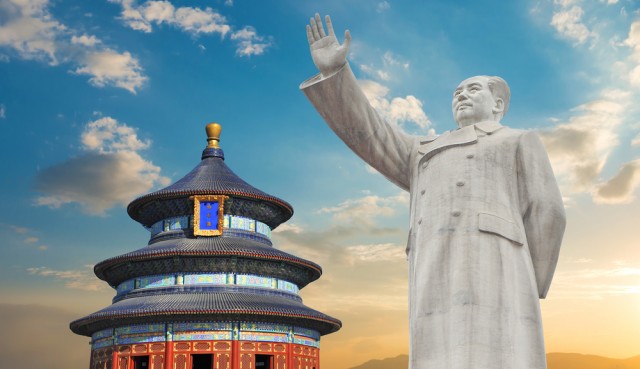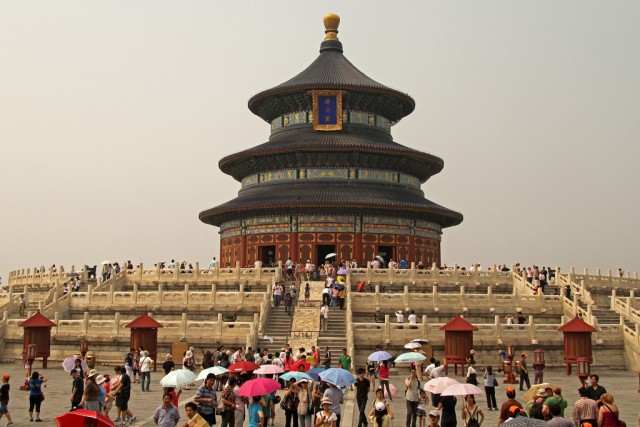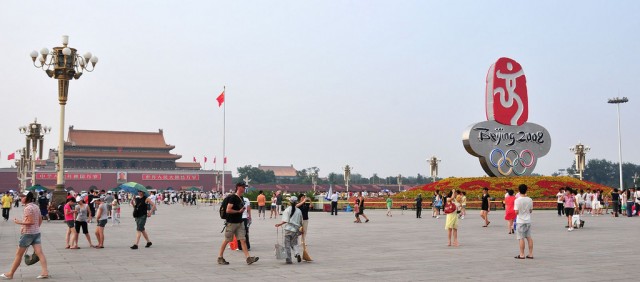 the Travel Enthusiast
the Travel Enthusiast
- 25 Mar
Adam in Amazing Places | NO COMMENTSThe Forbidden City
The people from Beijing were forced to keep distance from the Imperial Palace and from the “center of the world”.
An enormous task was given even in Chinese standards: 100.000 workers, craftsman like painters, carpenters, sculptors, bronze and golden smiths were all brought to construct a new residence for the emperor Yung-lo of the Ming dynasty on the flat grounds of Beijing. The work started in 1407 and it was finished in 1420, resulting in an exemplary city filled with palaces, pavilions, receipt halls and interior yards all covered with water ditches.
Even if some buildings were burned down through the centuries and they were not necessarily rebuilt at their original state, its general impression is intact even today. The tall walls and the exterior of the buildings are purple, and the tiles are yellow, the imperial color which shines like melted gold. For this splendor we can also add the white marble of the balustrades, stairs, ornamental bridges and its breathtaking terraces.
Whilst the Chinese are talking about the purple city, in western countries the “Forbidden city” term has become common. Along the way when 24 emperors ruled the city. The people were not even allowed to watch the buildings nearby unless they were invited to the palace or if they worked there.
Because it was known that the so called “sons of the sky” (the nickname of the emperors) were living there, the palace was considered the “center of the world”.
Those who approached the temple without permission were harshly punished, and the imperial city was not open until the abolition of the monarchy.
The Hall of Supreme Harmony
Nowadays, after the xenophobic periods and cultural revolutions, China tries to recharge its tourism. Big groups of visitors are passing through the southern gate to enter the palace where its first hall is the Hall of Supreme Harmony.
- Flights
- Hotels
- Packages
- Cars
- Cruises
travel search by Travelgrove (get this widget)The structure, being 35 meters high and dating back to the 18th century is stiffened not by nails but by wooden . The roof is sustained by 24 pillars. The pillars are also suspended by a golden dragon, which is the imperial symbol of strength. At a wooden podium of a Jacaranda lies the official throne from where the “sons of the sky” transmitted to the palaces officials, who stayed in front prostrated, the laws and decisions.
There are about 9.000 rooms in the palace, and most of them were destined for emperors . According to its tradition, every “son of the sky” could have 3 official wives, 6 favorites and 72 concubines.
Some emperors, however, had even 2.000 of concubines, each of them wearing a golden plate with their birthday and its status of honorary guest.
Outside of the emperors residence, Beijing, which changed its name for the next 3.000 years, shelters numerous other historical moments. One of the most famous among them is the Temple of Heaven, built in 1420 and renovated a few times, is a circular building with a golden globe on its top and having also a central hall which is 38 meters high. In the northwestern part of the city, at the bank of Kunming lake is the Summer Palace, Yiheyuan. Even in the 10th century here lied an imperial palace. (There is an imperial palace lying on this spot since the 10th century.)
Among the most important symbols of modern Beijing, with its 10 million of inhabitants is the Tiananmen square. It has got a surface of 25 hectares and that is where Mao Zedong’s monument also lies. The emblem “The Great Leader” stays embalmed in a glass coffin. Despite its abundant make up, his face expression indicates that his death was not an easy one.
Peking Man
At the western edge of Tiananmen square is the massive Great Hall of The People, with 400 meters pediment. The biggest part of the building’s space is the Bachelors Hall, which can accommodate hundreds of people. At the opposite part is the History Museum, a big tourist attraction. The section also exposes some archaeological discoveries which prove that Beijing is one of the oldest inhabited city in the world.
The most valuable relic is the skull of the Peking Man, discovered in a cave near Beijing. This ancestor of Homo Sapiens seems to have lived in China approximately 500.000 years ago.
You might also like





